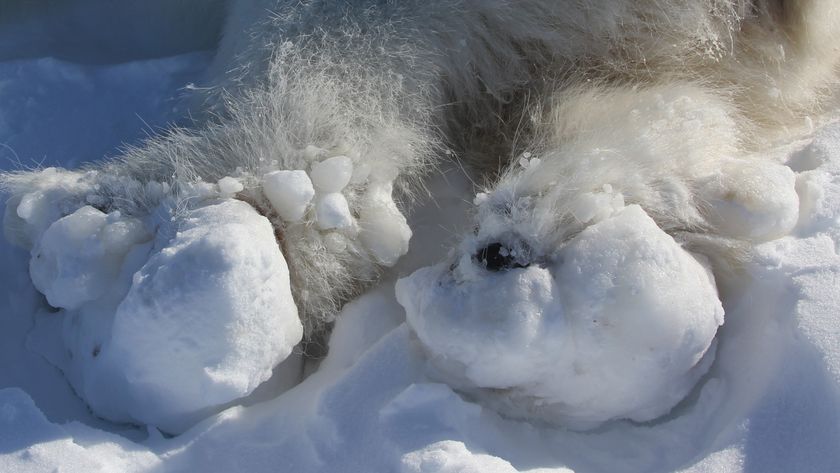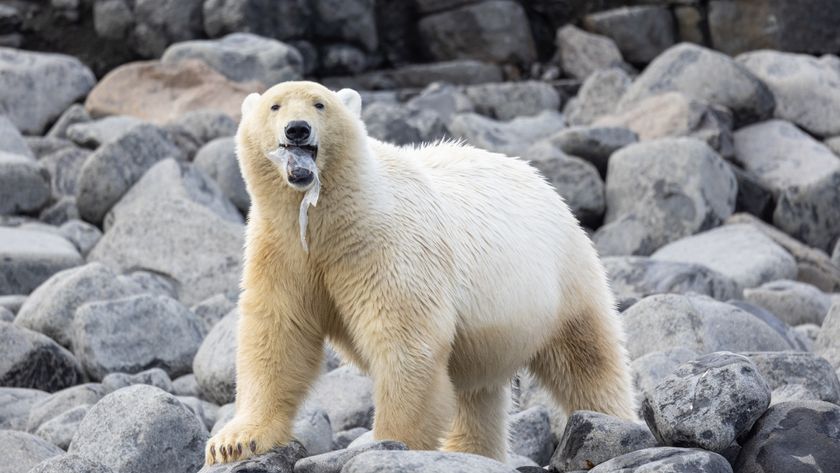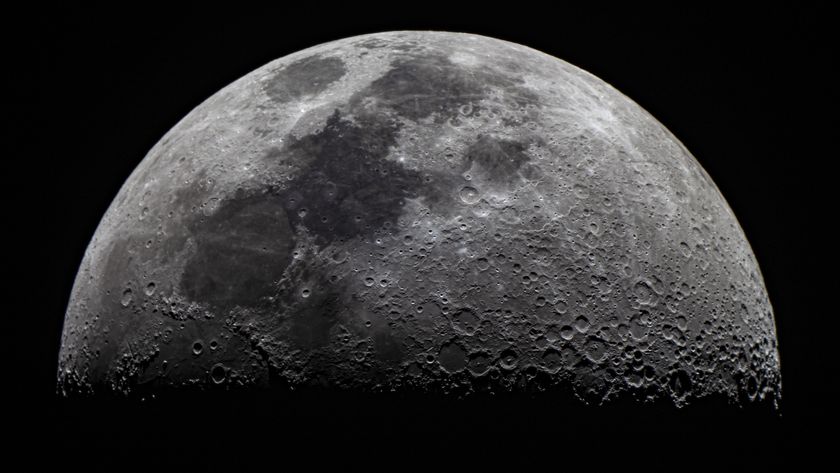Bears: Facts & Pictures
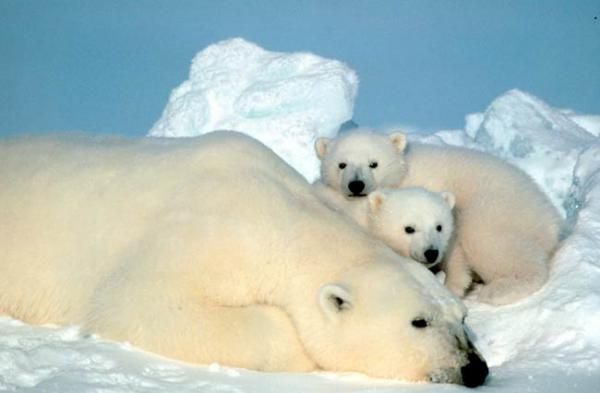
Bears, a small group of mostly large omnivorous mammals, can be found all over the world; they live in forests, mountains, tundra, deserts and grassy areas. Though there are different types of bear, all bear species have similarities. They all have stocky, fur-covered bodies; short legs; and a round head with a long snout.
There are eight species of bear: American black bear, Asiatic black bear, brown bear, giant panda bear, polar bear, spectacled bear, sloth bear and sun bear, according to the International Association for Bear Research & Management.
Size & appearance
Asiatic black bears have a distinctive, white, V-shaped patch on their chests. Sloth bears have similar patches, as well as light-colored muzzles. Sun bears have a crescent-shaped marking on their chests that looks like a rising sun. Spectacled bears, also called Andean bears, get their name because of the white circular markings around the eyes. Brown bears, despite their name, come in many colors, from light cream to almost black, according to the San Diego Zoo. Similarly, American black bears can be black, as well as chocolate and cinnamon brown, causing some people to confuse them with brown bears. Giant pandas are noted for their striking black-and-white coloration.
Polar bears, with distinctive white fur, are the largest bears. An adult male polar bear can grow to be 3.5 to 5 feet long (1 to 1.5 meters) and usually weighs between 775 and 1,200 lbs. (351 to 544 kilograms). The smallest bear is the sun bear. It grows to be 4 to 5 feet long (1.2 to 1.5 m) and weighs 60 to 150 lbs. (27 to 68 kg).
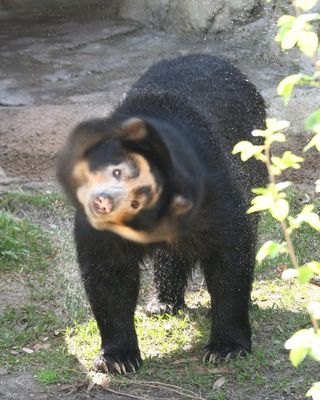
Habitat
Brown bears are found in more places than any other bear species. They live in northwestern North America, the Atlas Mountains of northwestern Africa, northern Asia, Europe and the Middle East. There are several subspecies of brown bears. Brown bears found in coastal Alaska are called Kodiak or Alaskan brown bears. The Alaskan Peninsular brown bear lives only on the western tip of the Alaskan peninsula, as its name implies. In the interior of North America, brown bears are sometimes called grizzly bears because their fur has white or tan tips. ("Grizzly" means "sprinkled or streaked with gray.") [Related: Image Gallery: Best of Bears]
American black bears live only in North America, and spectacled bears are found only in South America. Asiatic black bears are found all over Asia. The sloth bear is also found in Asia, particularly in India, Nepal, Bhutan and Sri Lanka, but may have disappeared from Bangladesh.
Polar bears and giant pandas are some of the rarest types of bears. Polar bears are found only in icy lands of the Arctic, and pandas are found only in wet and cool bamboo forests of central Asia.
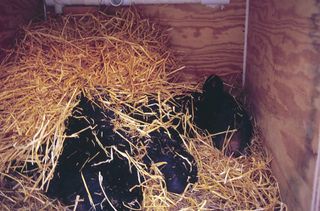
Habits
Many bears in the Northern Hemisphere hibernate when the weather is cold. Hibernation is a deep sleep that allows a bear to live without food for long periods of time. Brown bears, for example, spend four to six months sleeping in their dens, according to the San Diego Zoo. Their temperature drops slightly, their heart rate slows and their bodies use stored fat to stay alive.
Most bears are solitary and only interact with their young. Most bears are normally active during the day, unless they encounter humans frequently. Then, they may become nocturnal, to avoid contact. Asiatic black bears, on the other hand, are typically nocturnal. They sleep during the day in trees or caves, and hunt at night.
Diet
Bears are omnivorous, meaning they eat vegetation and meat. Each species of bear has certain foods that they eat more than others, though. For example, the polar bear eats mostly seals, and the giant panda bear spends 12 hours per day eating bamboo. Termites are the primary food of sloth bears. Sloth bears have especially long noses that allow them to suck termites from their holes.
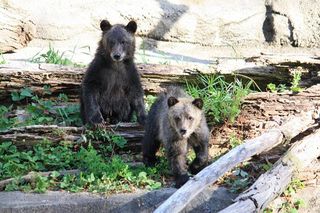
Offspring
For the most part, bears have their young in dens. Dens are homes made from hollowed-out trees, caves and piles of brush. Bears can also create a den by digging a hole into a hillside or under tree roots.
Because bears are mammals, they give birth to live young. Baby bears are called cubs. Cubs are completely defenseless when they are born and rely on their mothers for food and protection.
Sun bear cubs have no hair and cannot smell or hear when they are born. Their mother will often stand upright like a human and carry their cubs in their paws or mouth, according to the San Diego Zoo.
Cubs can be smaller than teddy bears. Brown bears weigh as little as 16 to 25 ounces (454 to 709 grams) when they are born. Newborn sun bears are even smaller and can weigh 7 to 12 ounces (198 to 340 g).
Classification/taxonomy
The taxonomy of bears, according to the Integrated Taxonomic Information System, is:
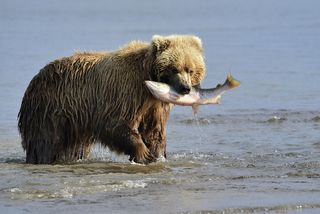
- Kingdom: Animalia
- Phylum: Chordata
- Class: Mammalia
- Order: Carnivora
- Family: Ursidae
- Genera: Ailuropoda, Helarctos, Melursus, Tremarctos, Ursus
- Species: Eight: Ailuropoda melanoleuca (giant panda), Helarctos malayanus (sun bear), Melursus ursinus (sloth bear), Tremarctos ornatus (spectacled bear), Ursus americanus (American black bear), Ursus arctos (brown bear), Ursus maritimus (polar bear) and Ursus thibetanus (Asiatic black bear)
- Subspecies: Ursus americanus, 16; Ursus arctos, 16; Ursus thibetanus, 7
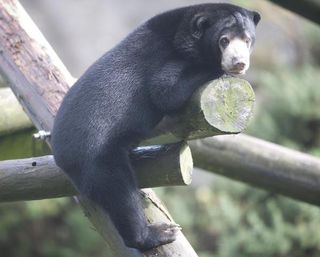
Conservation status
Six of the eight bear species (all except brown bears and American black bears) are endangered or vulnerable, according to the International Union for Conservation of Nature (IUCN). The giant panda is the most endangered bear. It is estimated that only 1,000 to 2,000 remain alive in the wild, according to the IUCN.
Polar bears are also endangered. According to the World Wildlife Federation, there are only 20,000 to 25,000 polar bears left. The IUCN lists sun bears and sloth bears as "vulnerable" due to habitat loss.
Other resources
Sign up for the Live Science daily newsletter now
Get the world’s most fascinating discoveries delivered straight to your inbox.

